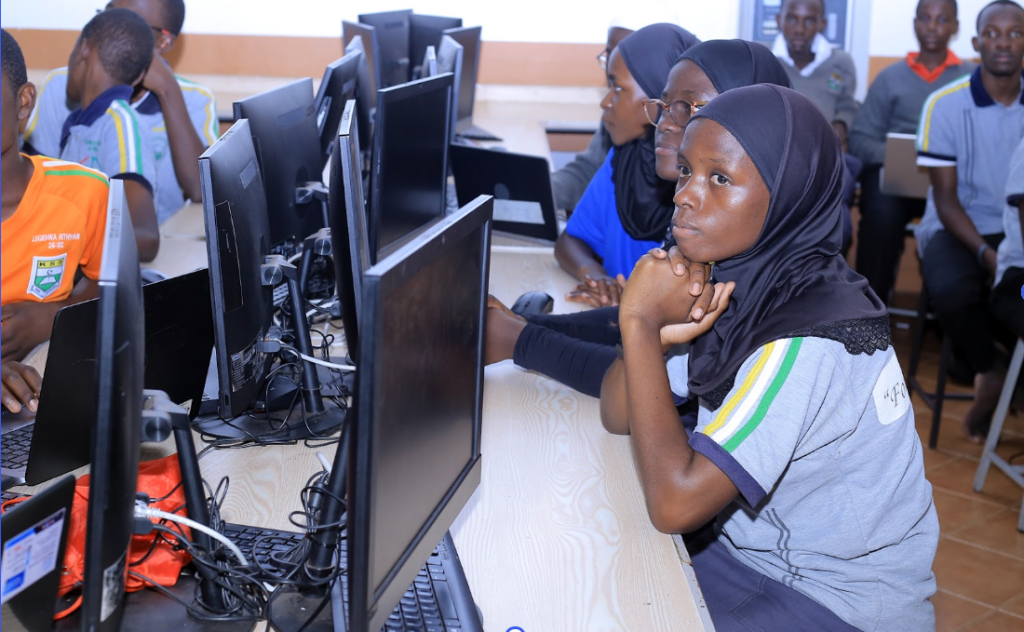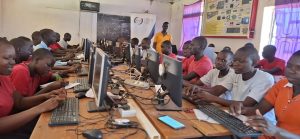The Human-Centred Mindset in AI – Why People Must Remain at the Core

As Artificial Intelligence continues to transform the way we learn, work, and live, one principle stands above all: AI must remain human-centred. This means that no matter how powerful AI becomes, people—their dignity, rights, and values—must always guide how AI is designed, used, and regulated. Without this principle, AI risks controlling us instead of serving us.
1) What is a Human-Centred Mindset in AI?
A human-centred mindset is the belief and practice that AI exists to serve people, not the other way around. It ensures that AI is developed and applied in ways that respect human dignity, promote justice, protect privacy, and support inclusive growth.
In practice, this mindset asks us questions such as:
- Does this AI system enhance human thinking, or does it replace and weaken it?
- Does the AI respect people’s rights, including their right to data privacy?
- Does it promote equality and inclusion, or does it increase discrimination?
- Example in Uganda: Imagine an AI system used in Kampala schools to predict which students are “likely to fail.” If the system is not designed with a human-centred mindset, it could unfairly judge students from poorer schools as “weaker” simply because the data used is biased. A human-centred approach would ensure teachers use AI as a guide—not as the final decision-maker—while still giving every student a fair chance.
2) Why Students Must Learn Human-Centred AI Early
For ICT Clubs, learning AI is not just about coding and using tools. It is also about developing the values and judgment needed to make AI safe, fair, and beneficial. If young people are not taught to think critically, AI could lead to harmful results: replacing human jobs unfairly, spreading misinformation, or worsening inequality.
- Example: AI-powered job recruitment platforms are being introduced in East Africa. Without human-centred checks, these platforms might reject candidates based only on technical data (such as school grades) without considering personal skills, creativity, or leadership qualities. Students must learn that AI should support human decision-making, not replace it.
👉 Club Activity: Organize a role-play activity where one group of students acts as an AI recruitment system and another group acts as human evaluators. Together, they must decide which applicants get selected for a job. Afterward, discuss how AI can assist—but not fully replace—human judgment in fair decision-making.
3) Protecting Human Agency in the Age of AI
One danger of advanced AI is that it may gradually reduce our ability to think for ourselves. If people rely too much on AI to make decisions—such as what to study, what to buy, or even who to marry—they risk losing their human agency (the ability to make free, independent choices).
AI must be used to enhance human creativity and critical thinking, not replace it. Students must learn to question AI outputs, compare them with human knowledge, and make their own decisions.
- Example: Some students now rely on AI tools like ChatGPT to write all their school essays. While these tools are powerful, they can weaken students’ ability to think and write independently if used blindly. A human-centred approach means students use AI for inspiration and support, but the final work must remain their own.
4) Human-Centred AI and Culture
AI must also respect and protect the cultural and linguistic diversity of societies. If AI is only designed for English or Western contexts, it risks ignoring African languages, traditions, and knowledge systems.
- Example in Uganda: Many translation apps perform poorly when translating Luganda, Lusoga, or Acholi compared to English or French. A human-centred approach encourages the development of AI that includes local languages, allowing Ugandans to benefit equally and preserve their culture in the digital age.
👉 Club Activity: Ask students to test an AI translation tool using Luganda or Runyankole. Let them discuss where the translation succeeds and where it fails. Then, encourage them to think of ways AI could be improved to better serve local communities.
5) Human-Centred AI for the Future
Finally, a human-centred mindset reminds us that AI must serve justice, fairness, and sustainability. It should help solve challenges like climate change, healthcare, and poverty—rather than creating new inequalities. Students in ICT Clubs are the future leaders of AI development in Uganda, and they must grow up knowing that every AI tool should be judged by this question: Does it serve people and the planet, or does it harm them?
The human-centred mindset is the foundation of responsible AI. For Ugandan students, it means learning to value ethics, inclusion, and fairness just as much as coding and problem-solving. AI must never take away our power to decide, to create, and to live with dignity. If our ICT Clubs master this principle, they will not only use AI wisely but also contribute to shaping a future where technology truly serves humanity.








